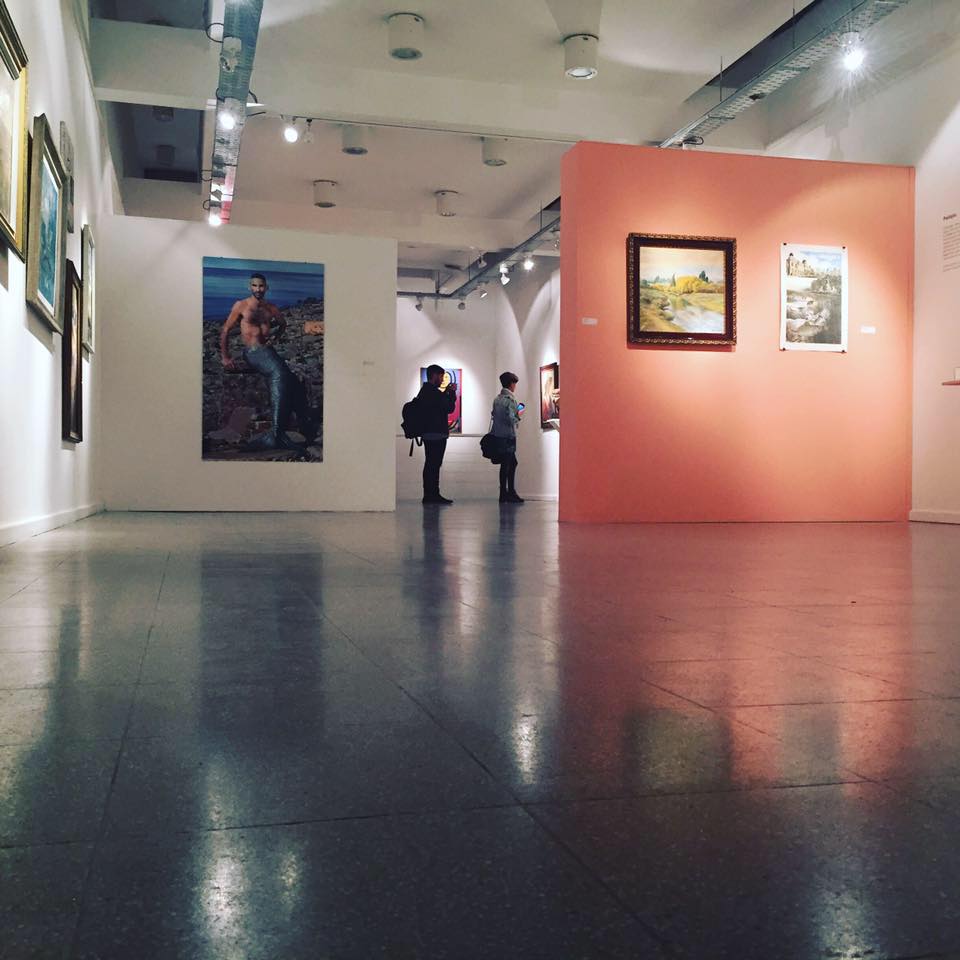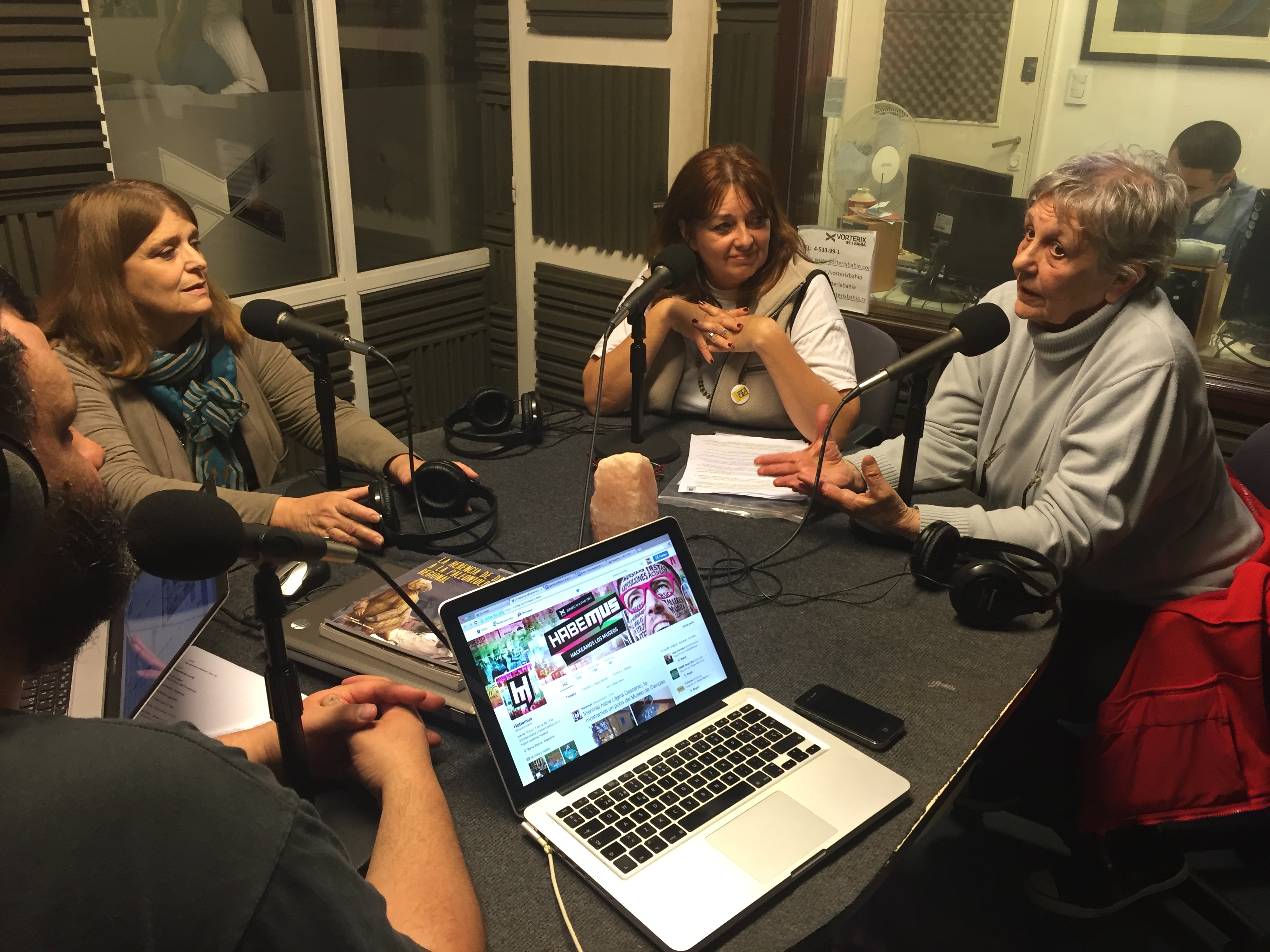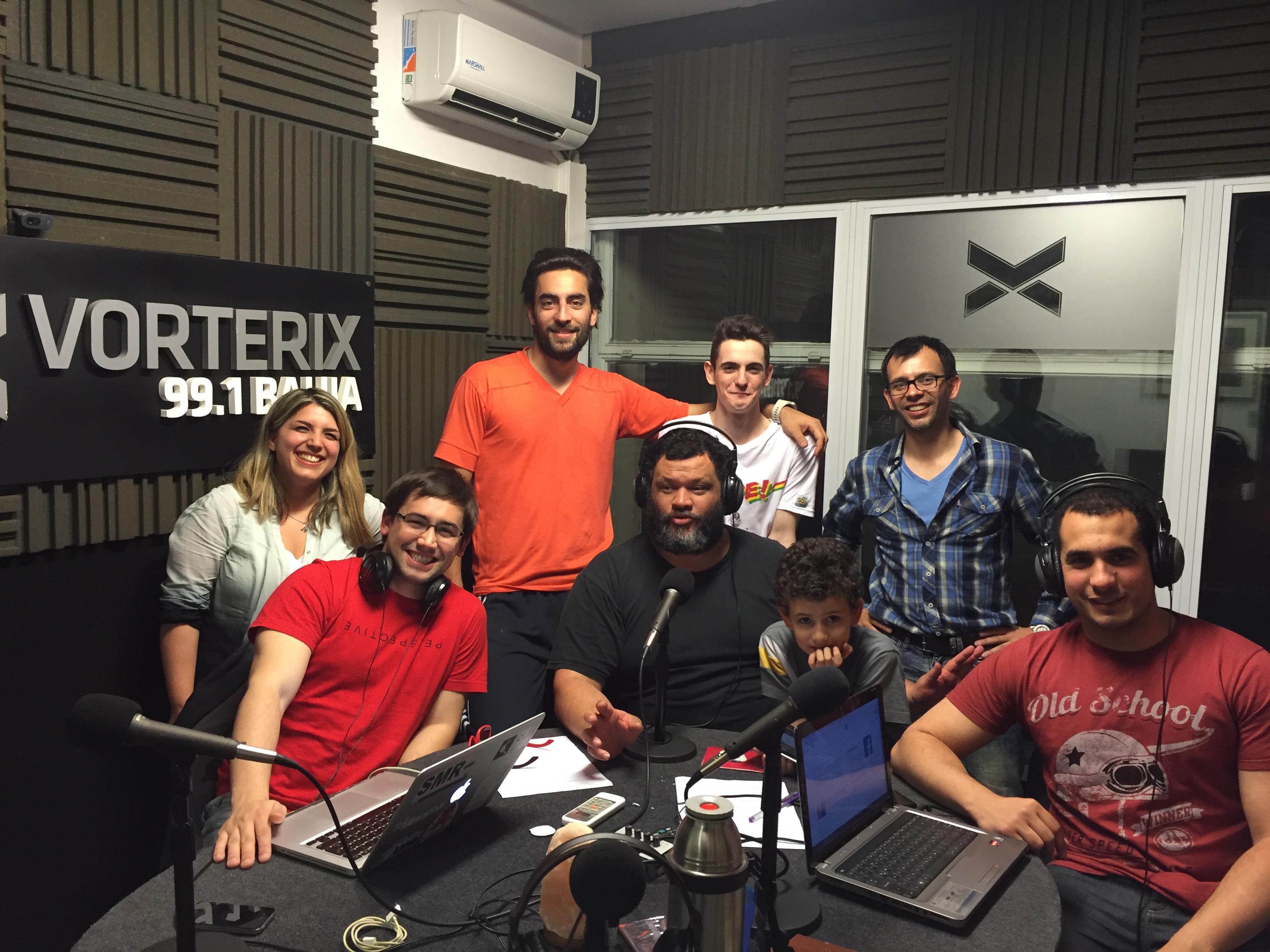Christian Díaz. From Bahía Blanca, Argentina
A radio programme about museums done by university volunteers. We find the project very inspiring and we have invited them to share the story and the behind-the-scenes.
Internet has radically changed the way in which people search and find cultural and leisure content, and the museums, cultural centres, and art galleries should undergo a digital transformation so as to offer an interactive and attractive experience. Based on this premise, a training and assistance programme for digital communication in the municipal museums of the city was designed, with the support of the Cultural Institute of the Municipality of Bahía Blanca and of the Universidad Nacional del Sur.
The museum panorama of Bahía Blanca
In Bahía Blanca, in the south of the province of Buenos Aires, Argentina, there are 7 municipal museums: the Art Museums: MBA-MAC, Ferrowhite museum-workshop, the Museum of the Port of the Engineer White, the Natural Sciences Museum, the Museum and Historic Archive, the Fortín Cuatreros Museum and Museum of Sports.
A strategic plan was designed for three years (2014-2016), which included the holding of workshops and professional internships about the management of the 2.0 communication.
Project of University Volunteering
During 2015 a subsidy was obtained and carried out by means of a project of University Volunteering, led by the Department of Humanities of the Universidad Nacional del Sur. With this project, the aim was to generate a working environment and technical assessment and advice about digital communication in cultural institutions and to develop professional internships in the municipal museums.
By 2016 the second year of the Project of Volunteering has become focused on the processes of digital transformation of the Art Museums of Bahía Blanca, exploring and experimenting with the app for cell phones, the launch of the website, and devices in the rooms that join the layers of contents in the exhibitions.
The general results of the diagnosis of the digital communication indicate that in each museum the situation is particular. Around the end of 2014 nobody had a webpage; they did use Facebook, but not all of them as a fan page; only two of them had a Twitter account and three used blogs. Added to this was the lack of staff trained in 2.0 communication, for the generation of a planning in the use of web tools. The general trend is that there doesn’t exist a production of specific content for social media tools, and neither is there a person charged with the institutional communication and this situation is related to the labour reality of the distinct spaces.
As part of the general evaluation of the communication of the institutions, along with the directors and teams of each of them, they coincide with the fact that the public that generates more challenges in the communication and also in the approach towards the distinct institutions is the one included in the age range between 15 and 35 years old.
Another of the relevant points in the diagnosis refers to the need to strengthen the 2.0 communication tools, by means of other classic communication strategies, so as to achieve a wider diffusion of these. Furthermore, and considering the change of paradigm in which the museums are immersed, it is felt that over time they will go from being institutions that treasure collections, of conservation, study and exhibition, to being places of recreation and social exchange, proposing the fact that the museum becomes an open and inclusive institution, and that the people take it as their own.
The radio programme about museums is born
Understanding this change of paradigm, we developed the production, management and putting on air of the radio programme HABEMUS. Let’s hack the museums. This is a programme about museums constructed jointly with the listeners/visitors and through a mass media, the radio.
The tasks prior to putting the programme on air included the selection of the radio station, the generation of the name, the specification of the general aim of the programme as well as establishing the internal structure, with fixed sections. With regard to the radio station, it was decided to choose Vorterix Bahía, given that it is a radio that offers an audience between the above-mentioned age ranges. At the same time it provided streaming, which meant that the programme could be listened to by internet, beyond not just Bahía Blanca, that is to say, with a national and even world scope.
In terms of the name, we opted for HABEMUS, with the sub-heading Let’s hack the museums. We understand hacking to be the action of interrupting and entering into a system and altering it. Although the term hacker has various meanings, for us we are interested in what it defines as a whole individual and it is dedicated to programming in an enthusiastic way, that is to say, any type of enthusiastic expert, who considers that providing information within the reach of everyone, constitutes an extraordinary good.
The main aim of the radio programme is to show, transmit, and generate new climates and connection with the public with regard to this new paradigm of museums. The sections incorporated are the agenda of local cultural activities; on air chat shows with professionals from museums or linked to the museums of the city, the country and the rest of the world, and the section of humour with Valerio Marinetti, our spatial correspondent from the world of museums.
On 10th September 2015 the first programme was broadcast, on a weekly basis, on Thursdays from 7.00 to 9.00pm. During the year 17 programmes were aired, during which interviews were carried out in the studio, there were telephone interviews and by Skype, with professionals from local, national and international museums. These counted on the participation of:
- 26 professionals from local institutions
- 14 professionals from national institutions, among which: Américo Castilla (president of Fundación TyPA) or Andrés Duprat (director of the Museo Nacional de Bellas Artes, Buenos Aires)
- 5 professionals from institutions from Spain, such as the Museu Nacional d’Art de Catalunya, Barcelona, the Museo Reina Sofía and the Museo Thyssen–Bornemisza, Madrid, or the MUSAC, León.
Among the topics which were dealt with, were community museums, museums and conservation, museums and social media or museums and training. All the programmes and interviews are available online (in Spanish).
With the focus fixed on the new paradigms of the digital transformation of the museums, we complemented the broadcasting of the weekly programme by sharing the contents of the programme on the social networks, as well as the activities of the museums of Bahía and other related activities as well as posting the interviews on the website. The digital used by Habemus, include the fan page in Facebook, the profile in Twitter @Habemuseos and on Instagram, the YouTube channel and the weekly sending of mails.
Call for musical compositions for museums
Considering that a museum is not just a place where things are exhibited: it is a place where things happen, another of the actions carried out within the framework of the radio programme, with the aim of widening the audiences, was the call for 10 local bands to compose a piece about the museums, using as the basis the 95 opinions written (in Spanish) in Twitter by the artistic director of the Thyssen Bornemisza Museum, Guillermo Solana, with whom we spoke on air. The pieces, interpreted by the local bands, are available on our channel of soundcloud.
Future steps
Part of the volunteering projects has continued in 2016 with a new season of the radio programme with the clear aim of hacking the museums, with the goal of not only bringing the public to the museum, but also to take the museum to the public, given that “The public are not only the visitors. The public are all those who talk about the museum”, Guillermo Solana in the #95Tesis.
We close this entry by reflecting on a phrase by Roc Laseca: “The museum is no longer here to tell us who we were, but to help us to announce collectively who we are going to be and in what way we are going to be able to live together. The museum is here to show these complexities.”
And the digital communication tools, we believe, will help us to go in this direction.












